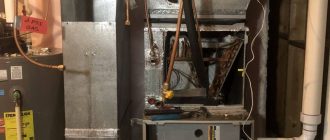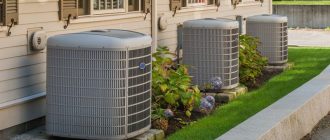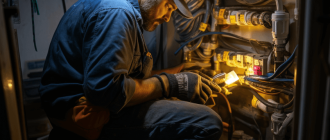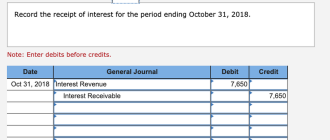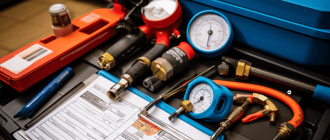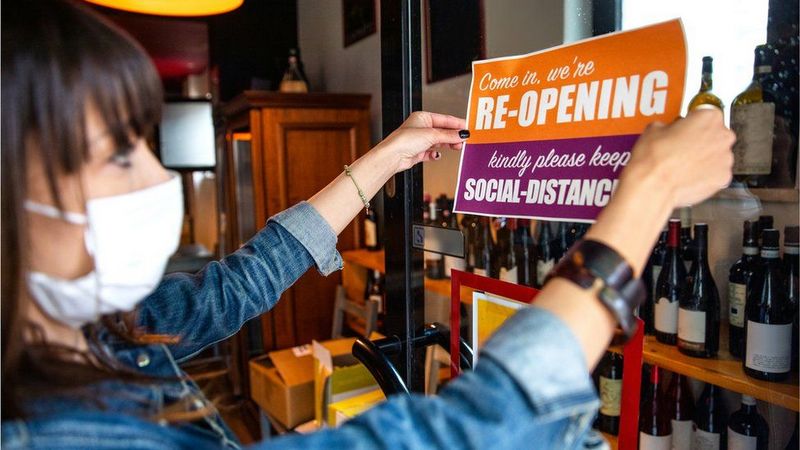
Commercial HVAC: 9 Items to Inspect Before Re-Opening After COVID-19 Shutdown
As businesses start preparing to re-open after the COVID-19 shutdown, it is important to ensure that their HVAC systems are functioning properly. The health and safety of employees and customers should be the top priority, and a well-maintained HVAC system plays a crucial role in creating a safe and comfortable environment.
Here are 9 key items to inspect before re-opening your commercial HVAC system:
- Air filters: Check and change air filters to improve indoor air quality.
- Ductwork: Inspect for leaks and clean to prevent the spread of contaminants.
- Thermostats: Test and recalibrate thermostats for accurate temperature control.
- Condenser coils: Clean condenser coils to improve energy efficiency.
- Blower motor: Lubricate blower motor for smoother operation.
- Electrical connections: Inspect electrical connections for signs of wear or damage.
- Refrigerant levels: Check refrigerant levels and top up if necessary.
- Outdoor unit: Remove any debris or obstructions around the outdoor unit.
- Ventilation: Ensure proper ventilation to enhance airflow and reduce the spread of airborne particles.
By thoroughly inspecting these key items, your commercial HVAC system will be ready to provide a safe and comfortable environment for your employees and customers during the post-COVID-19 reopening.
Don’t compromise on the health and safety of your business. Schedule an inspection of your commercial HVAC system today!
Importance of HVAC Inspection
Proper maintenance and inspection of commercial HVAC systems before re-opening after a COVID-19 shutdown is crucial. The HVAC system plays a vital role in ensuring a healthy and comfortable environment for employees, customers, and visitors.
Regular inspections help identify any potential issues or malfunctions that may have occurred during the shutdown period. By inspecting the HVAC system before re-opening, you can ensure that it is in proper working condition and provide a safe and healthy space for everyone.
Here are some key reasons why HVAC inspection is important before re-opening:
- Health and Safety: A properly functioning HVAC system helps maintain indoor air quality by removing contaminants and providing adequate ventilation. Routine inspections ensure that the system is effectively filtering the air and reducing the risk of spreading airborne illnesses.
- Energy Efficiency: An HVAC system that is not properly maintained can consume more energy, leading to higher utility bills. Regular inspections help identify and fix any issues that may be causing the system to operate inefficiently, saving energy and reducing costs.
- Comfort: A well-functioning HVAC system provides a comfortable indoor climate, regardless of the outside temperature. Inspections help ensure that the system is delivering the desired temperature, humidity levels, and airflow for optimal comfort.
- Preventive Maintenance: Inspections allow for early detection and prevention of potential problems. By addressing minor issues before they escalate, you can avoid costly repairs or system failures that may disrupt business operations.
- Extend Lifespan: Regular inspections and maintenance can help extend the lifespan of the HVAC system. By identifying and addressing any issues promptly, you can prevent premature wear and tear, increasing the longevity of the equipment.
- Compliance: Many commercial buildings have regulations and guidelines in place that require regular HVAC inspections. By conducting inspections before re-opening, you can ensure compliance with these regulations and provide a safe environment for all occupants.
- Equipment Performance: Inspections help identify any performance issues or inefficiencies in the HVAC system. By addressing these issues promptly, you can improve the overall performance and effectiveness of the system.
- Cost Savings: Proactive HVAC inspections and maintenance can help save money in the long run. By preventing major breakdowns and optimizing energy efficiency, you can minimize repair and replacement costs and improve the bottom line.
- Peace of Mind: Knowing that your HVAC system has been thoroughly inspected and is in proper working condition provides peace of mind. It allows you to focus on your business operations without worrying about potential HVAC-related issues.
Overall, conducting thorough HVAC inspections before re-opening a commercial space is essential for creating a safe, comfortable, and efficient environment. It ensures the well-being of occupants, reduces energy consumption, and helps maximize the lifespan of the equipment.
Preparing for Re-Opening
As businesses prepare to resume operations after the COVID-19 shutdown, it is crucial to ensure that the commercial HVAC system is inspected thoroughly. This will help maintain a safe and comfortable environment for employees and customers alike.
Here are 9 key items to inspect before re-opening:
- Check filters: Clean or replace filters to ensure proper air filtration and reduce the risk of airborne transmission.
- Inspect ductwork: Look for any damages or blockages that may hinder proper airflow.
- Test thermostats: Ensure that thermostats are calibrated correctly and functioning properly for efficient temperature control.
- Check condenser units: Inspect and clean condenser units to improve overall HVAC performance.
- Inspect air handlers: Ensure that air handlers are clean and in good operational condition.
- Check refrigerant levels: Verify that refrigerant levels are optimal for proper cooling.
- Inspect electrical connections: Examine all electrical connections for any signs of damage or loose connections.
- Test controls and safety switches: Ensure that controls and safety switches are operating correctly to prevent any potential hazards.
- Check overall system performance: Conduct a comprehensive assessment of the entire HVAC system to identify any potential issues.
By inspecting these key items before re-opening, businesses can maintain a healthy and comfortable indoor environment. It is important to hire a professional HVAC technician to perform these inspections and address any necessary repairs or maintenance.
Remember, a properly functioning HVAC system is essential for the well-being and safety of everyone in the commercial space.
Cleaning and Maintenance
Proper cleaning and maintenance is crucial for the efficient operation of commercial HVAC systems, especially before re-opening after the COVID-19 shutdown. It is important to inspect and address the following key items:
- Filters: Clean or replace air filters to ensure proper airflow and indoor air quality.
- Coils: Inspect and clean the evaporator and condenser coils to improve heat exchange efficiency.
- Fans and Belts: Check the fans and belts for any damage or wear and replace if necessary.
- Ductwork: Inspect ductwork for leaks, seal any gaps, and clean out debris to optimize airflow.
- Drain pans and Lines: Clean and clear drain pans and lines to prevent water buildup and potential mold growth.
- Condensate pumps: Test and clean condensate pumps to ensure proper drainage.
- Motors: Inspect and lubricate motors to reduce friction and improve performance.
- Thermostats: Calibrate and test thermostats for accuracy and proper functionality.
- Overall Inspection: Conduct a comprehensive inspection of the entire HVAC system to identify any potential issues or areas that require maintenance.
By thoroughly cleaning and maintaining the commercial HVAC system before re-opening, you can ensure optimal performance, energy efficiency, and a comfortable indoor environment for employees and customers alike.
Equipment Inspection and Testing
As part of the reopening process after the COVID-19 shutdown, it is crucial to inspect and test the commercial HVAC equipment to ensure its proper functioning and safety. Proper equipment inspection and testing can help identify any potential issues or damages that may have occurred during the shutdown period.
The following key items should be thoroughly inspected before re-opening:
- Filters: Inspect and replace filters as necessary to maintain clean and healthy indoor air quality.
- Ventilation Systems: Check and clean ventilation system components, including air ducts, dampers, and exhaust fans.
- Thermostats: Test and calibrate thermostats to ensure accurate temperature control and optimum energy efficiency.
- Refrigerant Levels: Inspect and recharge refrigerant levels if necessary to maximize HVAC system performance.
- Condenser and Evaporator Coils: Clean and inspect these crucial components to enhance heat transfer and prevent system breakdowns.
- Electrical Connections: Check for loose or damaged electrical connections and ensure proper grounding to prevent electrical hazards.
- Belts and Pulleys: Inspect and replace worn-out belts and pulleys to prevent equipment malfunction and reduce energy consumption.
- Blower Motor and Fan: Test and lubricate blower motors and fans for smooth and efficient operation.
- Safety Controls: Verify that safety controls, such as pressure switches and flame sensors, are functional and calibrated correctly.
By inspecting and testing these key items before reopening, you can ensure the optimal performance, energy efficiency, and safety of your commercial HVAC system. It is recommended to hire a professional HVAC technician to conduct a thorough inspection and testing to address any issues and make necessary repairs or replacements.
Air Filtration System Check
As we navigate through the ongoing COVID-19 pandemic, ensuring a safe and healthy environment is crucial for businesses planning to re-open after the shutdown. One important aspect to consider is the proper functioning of the air filtration system in your commercial HVAC system.
The air filtration system plays a vital role in maintaining indoor air quality by removing contaminants and particulate matter from the air. To ensure that your HVAC system is effectively filtering the air, it is essential to inspect the following key items:
- Filters: Check if the filters are clean and free from dust and debris. If the filters are clogged, they should be replaced to maintain optimal air flow and filtration efficiency.
- MERV Rating: Verify the Minimum Efficiency Reporting Value (MERV) rating of your filters. Higher MERV ratings indicate better filtration capabilities.
- Air Flow: Inspect the air flow within the HVAC system to ensure that it is not blocked or restricted. Any obstructions can impact the effectiveness of the filtration system.
- Seals: Check for any gaps or leaks in the seals around the air filtration system. Proper seals are essential to prevent unfiltered air from bypassing the filters.
- Condensate Drain: Ensure that the condensate drain is clear and functioning properly. A blocked drain can lead to moisture and mold growth, compromising the air quality.
- Cleanliness: Inspect the overall cleanliness of the air filtration system, including the housing and surrounding components. Any accumulated dirt or debris should be removed.
- Fan Motor: Check the fan motor for any signs of damage or malfunction. A properly functioning fan motor is essential for adequate air circulation.
- Upgrades: Consider upgrading your air filtration system to include features such as HEPA filters or UV light disinfection, which can help further eliminate airborne contaminants.
- Maintenance Schedule: Establish a regular maintenance schedule for your air filtration system to ensure its long-term effectiveness and performance.
By conducting a thorough inspection of your air filtration system, you can be confident in the quality of the indoor air and provide a safe and healthy environment for your employees and customers as you re-open your business after the COVID-19 shutdown.
Ductwork Inspection
Proper inspection of ductwork is crucial before re-opening a commercial establishment after the COVID-19 shutdown. Here are key items to inspect:
1. Cleanliness: Ensure that the ductwork is free from debris, dust, and other contaminants that may have accumulated during the shutdown period.
2. Airflow: Check the airflow in each duct to ensure proper distribution and ventilation. Any obstructions or blockages should be immediately addressed.
3. Damages: Inspect the ductwork for any visible damages such as leaks, cracks, or loose joints. These should be repaired or replaced before re-opening.
4. Insulation: Verify that the insulation in the ductwork is intact and properly installed. Damaged insulation can lead to energy loss and decreased system efficiency.
5. Condensation: Look for signs of condensation or moisture buildup in the ducts. This can indicate issues with insulation or improper humidity control.
6. Mold and Mildew: Check for any signs of mold or mildew growth in the ductwork. These can pose health risks and should be remediated before re-opening.
7. Pest Infestation: Inspect for any signs of pest infestation such as droppings or nests. Pests can cause damage to the ductwork and compromise indoor air quality.
8. Proper Sealing: Ensure that all duct joints and connections are properly sealed to prevent air leakage. Leaks can result in energy waste and decreased system performance.
9. Balancing: Verify that the airflow is properly balanced throughout the ductwork system. Imbalances can lead to uneven temperature distribution and discomfort for occupants.
By thoroughly inspecting the ductwork before re-opening, commercial establishments can ensure a healthy and efficient indoor environment for their employees and customers.
Ventilation System Assessment
A proper ventilation system is crucial for the safety and well-being of your staff and customers, especially in the wake of the COVID-19 pandemic. Before re-opening your commercial space after the shutdown, it is essential to inspect your HVAC system for any potential issues. Here are some key items to consider during your ventilation system assessment:
- Filters: Check and replace air filters to ensure proper air circulation and filtration.
- Exhaust Fans: Inspect and clean exhaust fans to remove any accumulated dust, debris, or contaminants.
- Air Vents: Clean and sanitize air vents to prevent the circulation of allergens and pathogens.
- Ductwork: Examine the ductwork for any leaks or damages that may compromise the airflow.
- Airflow Direction: Ensure that the airflow within your commercial space follows the recommended guidelines for COVID-19 safety.
- Cleanliness: Clean and disinfect all components of your HVAC system, including coils, condensate pans, and drain lines.
- Outdoor Units: Inspect the outdoor units for any obstructions, damages, or signs of wear and tear.
- Odors: Investigate any unusual odors coming from the HVAC system, as they may indicate mold or other issues.
- System Operation: Test the overall operation of the HVAC system, including temperature control and fan speed.
By thoroughly inspecting these items before re-opening, you can ensure that your ventilation system is in optimal condition and adheres to the necessary standards for a safe and healthy environment.
Temperature and Humidity Control Testing
One of the key items to inspect before re-opening a commercial HVAC system after a COVID-19 shutdown is the temperature and humidity control. Proper control of temperature and humidity is crucial to maintain a comfortable and healthy environment for employees and customers.
During the shutdown, the HVAC system might have been inactive for an extended period of time, which could lead to issues such as dust accumulation, clogged filters, or malfunctioning sensors. To ensure the HVAC system is functioning optimally and providing the desired temperature and humidity levels, it is important to conduct thorough testing.
Here are some important steps to consider when testing the temperature and humidity control of a commercial HVAC system:
- Inspect the thermostat and ensure it is functioning properly. Check if it accurately displays the temperature and can be adjusted accordingly.
- Measure the ambient temperature in different areas of the building to ensure there are no significant variations or hot/cold spots.
- Check the humidity levels using a hygrometer. The ideal range for indoor humidity is typically between 40-60%.
- Inspect and clean the air ducts to remove any accumulated dust or debris that could affect air circulation and temperature control.
- Verify that the air filters are clean and functioning properly. Replace them if necessary.
- Ensure that all vents and grilles are not blocked or obstructed, allowing for proper airflow.
- Test the HVAC system’s cooling and heating capabilities by setting different temperature settings and monitoring how quickly the system responds.
- Check for any unusual noises or vibrations coming from the HVAC system, as they could indicate a mechanical issue that needs to be addressed.
- Consider hiring a professional HVAC technician to perform a comprehensive inspection and maintenance of the system to guarantee its optimal performance.
By thoroughly inspecting and testing the temperature and humidity control of your commercial HVAC system before re-opening, you can ensure a comfortable and healthy environment for everyone in the building. Proper control of temperature and humidity is essential, especially during these challenging times.
Energy Efficiency Review
As businesses prepare for the reopening after the COVID-19 shutdown, it is crucial to ensure that the commercial HVAC systems are operating efficiently. This not only helps in maintaining a comfortable environment for employees and customers but also reduces energy costs. Here are 9 key items to inspect as part of the energy efficiency review:
- Thermostat settings: Check that the thermostats are properly set and programmed to optimize energy usage.
- Air filters: Inspect and clean or replace air filters to ensure optimal airflow and improve indoor air quality.
- Ventilation system: Evaluate the ventilation system to ensure it is providing sufficient fresh air and remove any obstructions.
- Ductwork inspection: Inspect the ductwork for any leaks or gaps that may lead to energy loss.
- Sealing: Seal any gaps or cracks around windows, doors, and other areas to prevent air leakage.
- Insulation: Assess the insulation in walls and ceilings to enhance energy efficiency and reduce heat transfer.
- Efficient equipment: Consider upgrading to energy-efficient HVAC equipment to reduce energy consumption and costs.
- Regular maintenance: Schedule regular maintenance for the HVAC system to ensure optimal performance and prevent breakdowns.
- Monitoring and optimization: Implement a monitoring system to track energy usage and identify areas for improvement.
By conducting an energy efficiency review of the commercial HVAC system before re-opening, businesses can save on energy costs, improve indoor comfort, and contribute to a sustainable future.
Safety Measures Evaluation
When it comes to reopening your commercial HVAC system after the COVID-19 shutdown, ensuring the safety of your employees and customers is paramount. Evaluating and implementing the necessary safety measures is essential to create a healthy and comfortable environment.
1. Air Quality Assessment: Before reopening, inspect the HVAC system to ensure proper ventilation and air filtration. Evaluate the filters and consider upgrading to high-efficiency filters to trap contaminants and allergens effectively.
2. Routine Cleaning and Sanitization: Thoroughly clean and sanitize all HVAC components, including air ducts, vents, fans, and coils. Utilize appropriate disinfectants recommended for HVAC systems to eliminate any potential viruses or bacteria.
3. Temperature Control: Verify that the HVAC system is functioning correctly and maintaining the desired temperature levels. Proper temperature control helps create a comfortable and safe indoor environment for everyone.
4. Enhanced Filtering: Consider installing additional air purifiers or UV germicidal lamps within the HVAC system to further improve air quality and eliminate airborne pathogens.
5. Ductwork Evaluation: Inspect the ductwork for any leaks or damage that could affect the HVAC system’s efficiency. Seal any gaps or cracks to prevent air leakage and ensure optimal performance.
6. Occupancy Sensors: Install occupancy sensors to help regulate airflow and optimize energy efficiency based on the number of people present in each area. This ensures that air is only conditioned in occupied spaces, reducing energy waste.
7. Regular Maintenance: Implement a preventive maintenance plan for your HVAC system. Regular inspections and tune-ups help identify and address potential issues early on, ensuring continued safety and efficiency.
8. Airflow Balancing: Ensure proper airflow distribution throughout the building by balancing dampers and adjusting vents. This helps maintain uniform temperature levels and enhances overall airflow performance.
9. Employee Training and Awareness: Provide comprehensive training to your employees regarding HVAC safety measures, including proper use of thermostats and air vents, practicing good hygiene, and promoting overall awareness of healthy indoor environments.
By following these safety measures and conducting a thorough evaluation of your commercial HVAC system before reopening after the COVID-19 shutdown, you can create a healthier, safer, and more comfortable environment for everyone.
Integration with Smart Building Technology
The COVID-19 shutdown has emphasized the importance of smart building technology in commercial HVAC systems. As businesses prepare for re-opening, it is crucial to inspect and update their HVAC systems to ensure optimal performance and safety.
Smart building technology offers numerous benefits when integrated with commercial HVAC systems. By automating and optimizing HVAC operations, businesses can reduce energy consumption, lower costs, and enhance occupant comfort.
Before re-opening, it is essential to inspect the integration of smart building technology with the HVAC system. This includes checking the compatibility of sensors, thermostats, and controls. Additionally, it is crucial to ensure that the HVAC system can communicate effectively with other smart building systems, such as lighting, security, and occupancy sensors. This integration enables a unified control platform, facilitating better monitoring and management of the entire building environment.
With the integration of smart building technology, businesses can benefit from real-time data analysis and predictive maintenance. Smart sensors can detect potential issues before they escalate, allowing proactive maintenance and preventing costly breakdowns. Furthermore, remote monitoring and control capabilities enable facility managers to adjust HVAC settings, monitor energy consumption, and receive alerts, all from a centralized platform or mobile application.
Integration with smart building technology also provides businesses with valuable insights into energy usage patterns. By analyzing this data, businesses can identify opportunities to optimize energy consumption, reduce carbon footprint, and achieve sustainability goals.
In conclusion, integrating smart building technology with commercial HVAC systems is essential for ensuring a safe, efficient, and comfortable environment. Before re-opening, businesses should inspect the compatibility and functionality of the integration. Doing so will not only enhance energy efficiency and cost savings but also contribute to a healthier and more sustainable future.
Compliance with Industry Standards
In addition to the 9 key items that need to be inspected before re-opening after the COVID-19 shutdown, it is crucial for commercial HVAC systems to comply with industry standards. This ensures the proper functioning and safety of the HVAC system, as well as maintaining a healthy and comfortable environment for occupants.
Compliance with industry standards involves adhering to regulations and guidelines set forth by organizations such as the American Society of Heating, Refrigerating and Air-Conditioning Engineers (ASHRAE) and the Occupational Safety and Health Administration (OSHA).
When inspecting commercial HVAC systems before re-opening, it is important to verify that all components meet the required industry standards. This includes ensuring that the HVAC equipment is properly installed and maintained, the ventilation system is providing adequate fresh air exchange, and the filtration system is effectively removing contaminants from the air.
Inspect:
- HVAC equipment installation: Verify that the HVAC units are installed correctly, following manufacturer guidelines and industry standards.
- Maintenance records: Review maintenance records to ensure that the HVAC system has been regularly serviced and all necessary repairs or replacements have been carried out.
- Ventilation system: Check that the ventilation system is functioning properly and providing sufficient outdoor air intake, in accordance with industry standards.
- Filtration system: Inspect the filtration system to ensure it is capable of capturing and removing contaminants, such as dust, allergens, and airborne particles, from the circulating air.
- Airflow balancing: Verify that the airflow within the HVAC system is properly balanced to provide consistent and comfortable conditions throughout the building.
- Temperature and humidity control: Test the temperature and humidity control systems to ensure they are operating within the recommended industry ranges.
- Thermostat calibration: Check that thermostats are calibrated correctly and are accurately controlling the HVAC system.
- Ductwork inspection: Inspect the ductwork for any leaks, damage, or improper sealing that could affect the efficiency and performance of the HVAC system.
- Energy efficiency: Assess the energy efficiency of the HVAC system and identify any opportunities for improvement to reduce energy consumption and operating costs.
By ensuring compliance with industry standards, businesses can have confidence in the performance and reliability of their commercial HVAC system. This ultimately contributes to a safe, comfortable, and healthy environment for employees, customers, and visitors.
Q&A:
Why is it important to inspect HVAC systems before re-opening after the COVID-19 shutdown?
It is important to inspect HVAC systems before re-opening after the COVID-19 shutdown to ensure that the systems are functioning properly and are able to maintain safe and comfortable indoor air quality. HVAC systems play a crucial role in controlling the spread of airborne viruses, so a thorough inspection is essential for the health and safety of building occupants.
What are some key items that should be inspected in a commercial HVAC system before re-opening after the COVID-19 shutdown?
Some key items that should be inspected in a commercial HVAC system before re-opening after the COVID-19 shutdown include air filters, ventilation systems, ductwork, thermostats, condensate drains, and fan motors. It is also important to check for any signs of damage or wear and tear that could affect the system’s performance.
How often should commercial HVAC systems be inspected?
The frequency of inspections for commercial HVAC systems can vary depending on factors such as the type of system, the size of the building, and the local climate. However, it is generally recommended to have HVAC systems inspected at least twice a year to ensure optimal performance and energy efficiency.
Can I inspect my commercial HVAC system myself, or do I need to hire a professional?
While some basic maintenance tasks can be performed by building owners or maintenance staff, it is generally recommended to hire a professional HVAC technician for a thorough inspection of a commercial HVAC system. HVAC systems are complex and require specialized knowledge and tools to properly inspect and diagnose any issues.
What are the potential consequences of not inspecting a commercial HVAC system before re-opening after the COVID-19 shutdown?
The potential consequences of not inspecting a commercial HVAC system before re-opening after the COVID-19 shutdown include poor indoor air quality, inefficient operation, increased energy consumption, higher utility bills, and potential health and safety risks for building occupants. Neglecting HVAC system inspections can lead to costly repairs and reduced lifespan of the equipment.
What are the key items to inspect before re-opening a commercial HVAC system after a COVID-19 shutdown?
There are 9 key items to inspect before re-opening a commercial HVAC system after a COVID-19 shutdown. These include checking the air filters, inspecting and cleaning the ductwork, ensuring proper ventilation, testing and calibrating the thermostats, checking the functionality of the air conditioning units, inspecting and cleaning the condenser coils, testing the airflow, evaluating the indoor air quality, and conducting a thorough system check.
Why is it important to inspect the air filters before re-opening a commercial HVAC system after a COVID-19 shutdown?
Inspecting the air filters is important before re-opening a commercial HVAC system after a COVID-19 shutdown because the filters play a crucial role in maintaining indoor air quality. Dirty or clogged filters can decrease airflow and allow contaminants to circulate in the building. By checking and replacing the filters if necessary, you can ensure that the HVAC system is providing clean and healthy air for the occupants.

